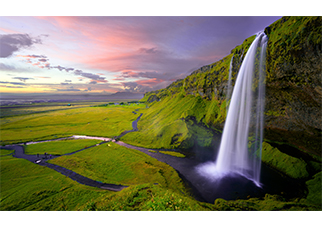Shooting waterfalls is a must to-do, especially with those folks who shoot nature and landscape. Shooting a waterfall is fun and very rewarding especially if you recognize the way to get the best waterfall images. The whole idea of shooting a waterfall is to point out its is flow and motion, sometimes bigger waterfalls are visualised in wide angles to offer a thought about its vastness and size. A waterfall also will be suffering from its flow of water and particularly during monsoons where all water bodies are full and flowing. It becomes an excellent opportunity for photographers to capture images of the waterfalls. Waterfall images are often made very interesting with a mixture using lens, composition and tools sort of a ND filter or a polariser. In this article we’ll discuss some tips to form your waterfall images even better and guide you to a number of the gorgeous waterfalls in India where you can go and shoot amazing images.
To begin with capturing waterfall images, you’ll need a camera that has full manual control over the settings, be it a DSLR or a mirrorless camera. Although it’s not really necessary to possess high end gear to capture good images and your crop sensor camera is quite enough.
Using an ND filter.
ND or Neutral density filters control the mount of sunshine hitting your sensor. This becomes very helpful in situations where you’ve got to regulate the quantity of sunshine. You can do an equivalent changes with the settings of the camera also but an ND filter offers you more freedom when you would like a bigger aperture within the middle of the day. There are a couple of disadvantages with ND filters, especially while shooting landscape and therefore the time of the day has harsh and hard sunlight. In such cases there’ll be areas with high intensity light forming hotspots then the shadow areas. In such a case, using an ND filter will get lesser details in the shadow region. To solve this, you ought to consider shooting at dawn or dusk depending on the intensity and direction of the sun.
Pay attention to details just like the environment, the direction of sunshine and the the elements that you simply want in your frame. It’s important to compose your shot before you press the shutter. Employing a wide angle lens will allow you to bring more area into your frame.
Choose your exposure correctly.
If you’re fixing fully manual, it’s suggested that you to take it easy on the settings. One thing you will surely require while shooting a waterfall its the sense of motion and flow. This needs opening the shutter for a extended time for that the exposure can capture the flow of the water with the environment perfectly steady. Sometimes there is going to be a considerate amount of wind and this may cause the trees and a couple of elements in your frame to move and cause blur. This can be overcome by shooting multiple exposure and a couple of where the exposure is balanced for a faster shutter speed so that the elements can be captured steady. Later the pictures are often stacked in post-processing and a wonderfully blended image are often achieved.
Use a polariser to eliminate the unwanted reflections in the image. When shooting waterfalls, you’ll encounter variety of places where there will be tons of reflections. Reflections do look good in some situations but most of it might be unnecessary. So you’ll need to adjust the filter to get the utmost effect of removal of reflection.
Take a look at the histogram.
The histogram shows the quantity of highlights and shadows within the image and always keep the values from blowing up. An excessive amount of highlights or too dark shadows aren’t desirable as there’s tons of details which will be lost within the shadows and highlights. You have to shoot in RAW file format to permit you to fix anything that has gone wrong. But always make sure to have a glance at the pictures and fix anything directly inside the camera instead of depending upon post processing.
Use a tripod
Use a tripod to keep the camera steady, select the smallest ISO and set the aperture narrow. See the desired shutter speed if achieved or use an ND filter to get even slower speeds. The thought is to get the water in motion which can look milky after completing the exposure.
Most places and countries have some or the other waterfalls flowing. These waterfalls tend to be bigger and more beautiful during the monsoons and make incredible subjects for landscape photography. In India, there are quite a couple of waterfalls and if you would like to travel and capture some waterfalls, Google about the amazing places in India where you’ll get the simplest waterfall images.

